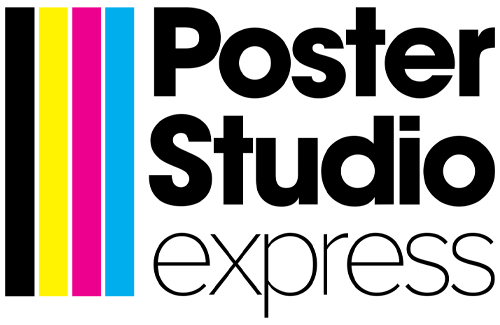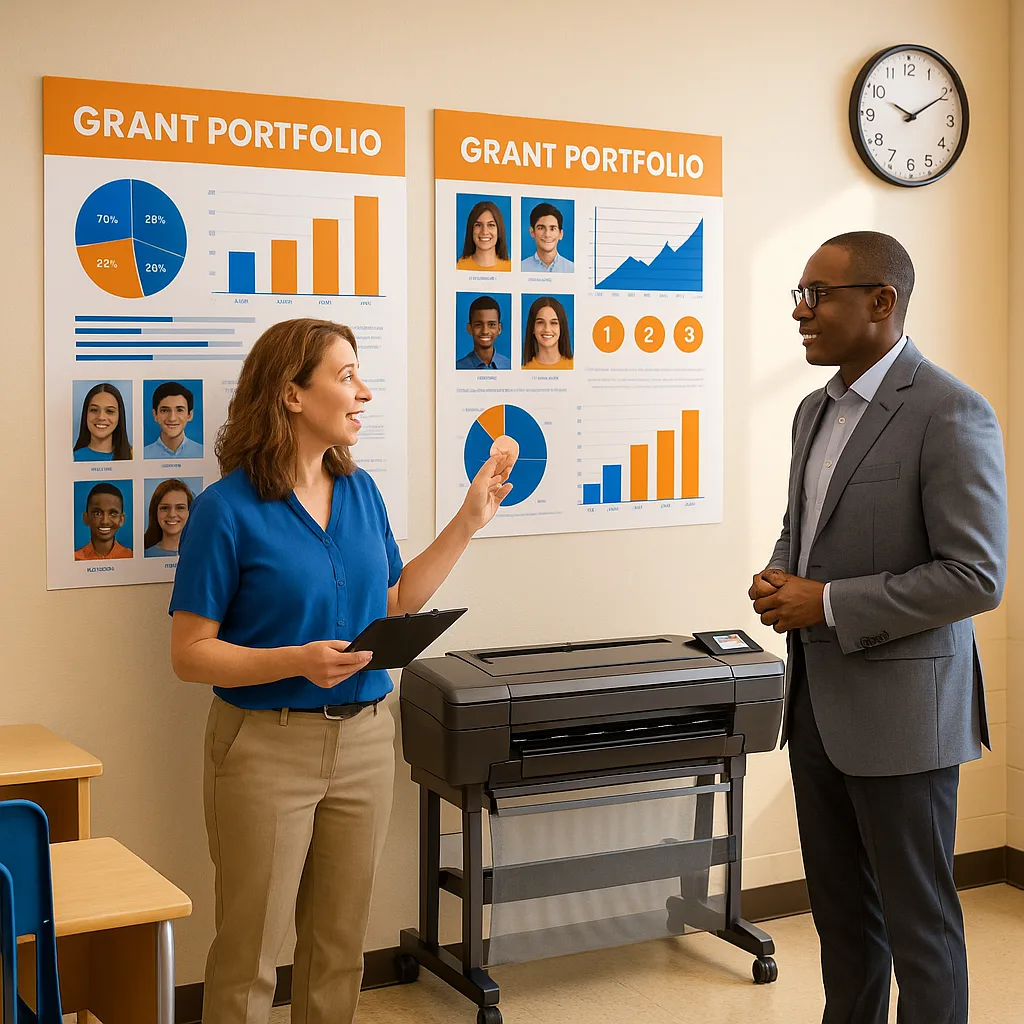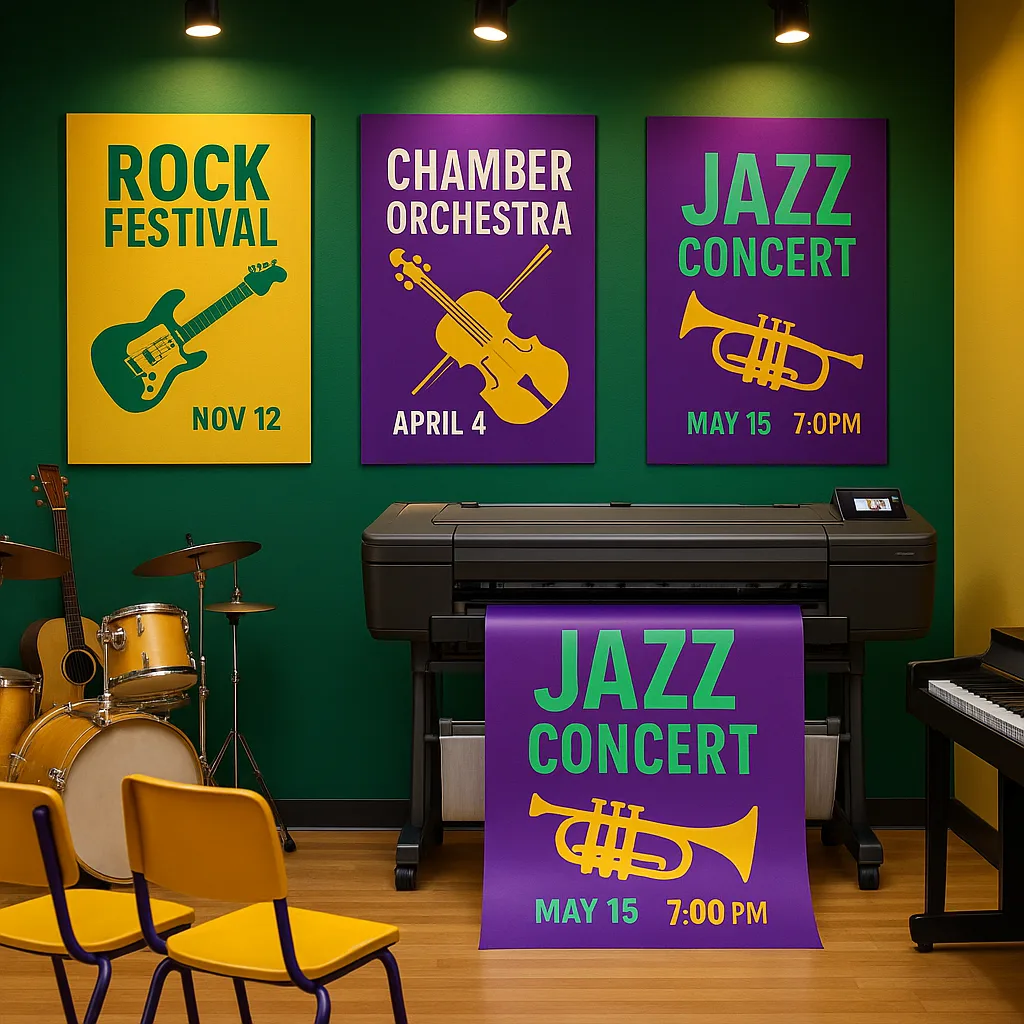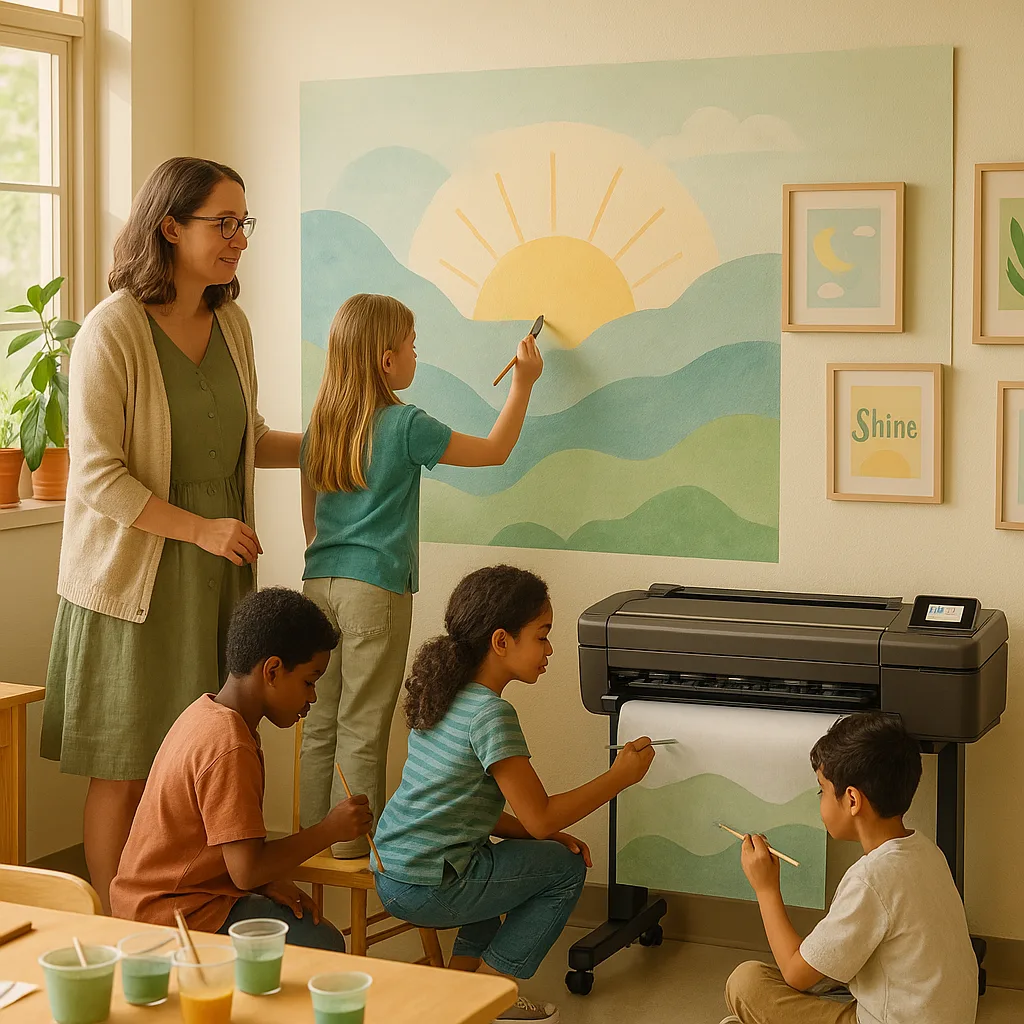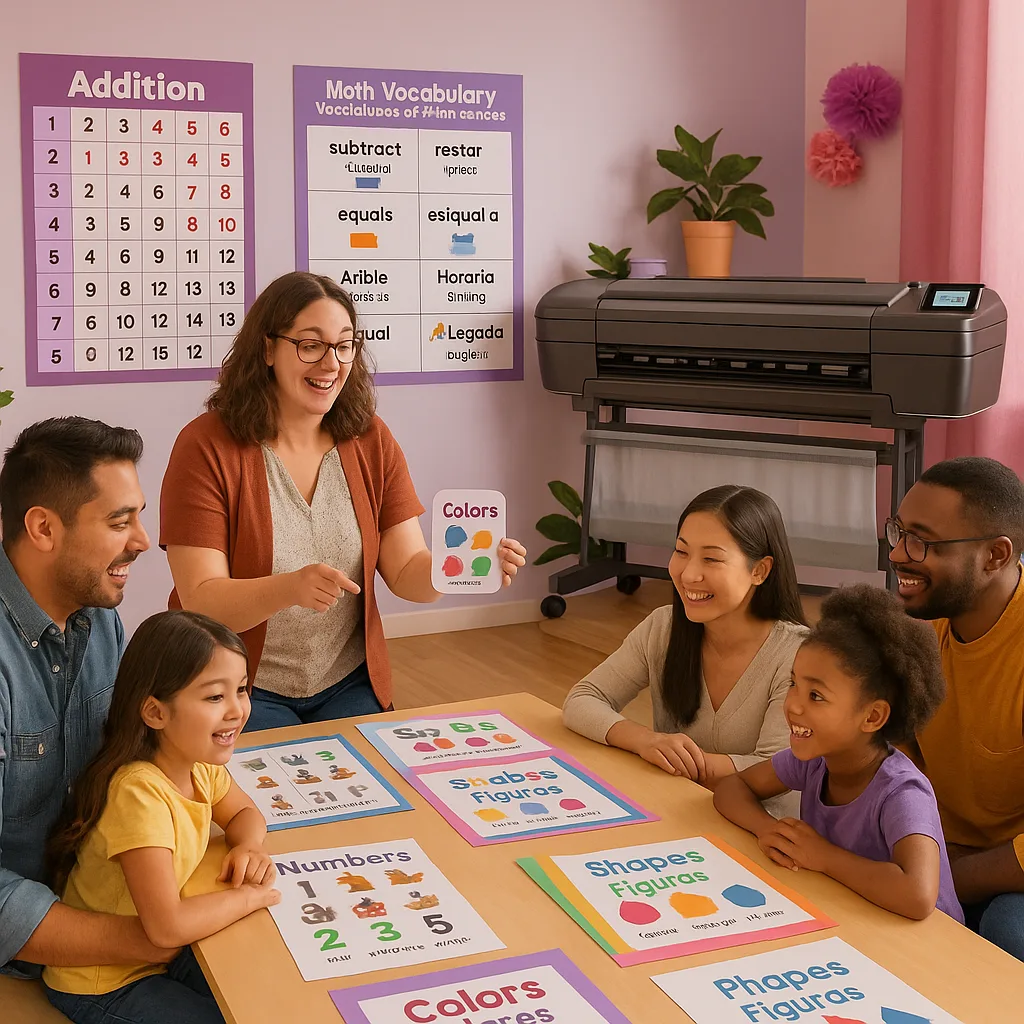
Educational grant reviewers wade through hundreds of text-heavy proposals each funding cycle, searching for clear evidence of transformative impact. What if your next application could leap off their screens with compelling visual documentation that demonstrates exactly how your school’s poster machines drive measurable student success? Strategic poster machines grant documentation has become the secret weapon of successful administrators who consistently secure five-figure awards.
The Power of Visual Evidence in Educational Grant Applications
Grant reviewers spend an average of just seven minutes evaluating initial applications, according to recent Foundation Center research. During this brief window, visual documentation captures attention far more effectively than dense paragraphs of educational jargon. Furthermore, proposals featuring high-quality visual evidence receive approval rates 47% higher than text-only submissions, as documented in the 2023 National Grants Management Association survey.
California’s competitive grant landscape demands evidence that transcends traditional metrics. While test scores and attendance data matter, reviewers increasingly seek tangible proof of classroom transformation. Subsequently, schools utilizing poster machines create natural documentation opportunities throughout every learning cycle. Each vibrant display becomes potential grant-winning evidence when captured strategically.
Consider Riverside Unified’s recent $75,000 Title I enhancement grant success. Their application featured before-and-after classroom photos showcasing student-created math concept posters, multilingual parent engagement displays, and data visualization walls. Consequently, reviewers could instantly visualize the proposed program’s impact, leading to full funding approval on their first submission attempt.
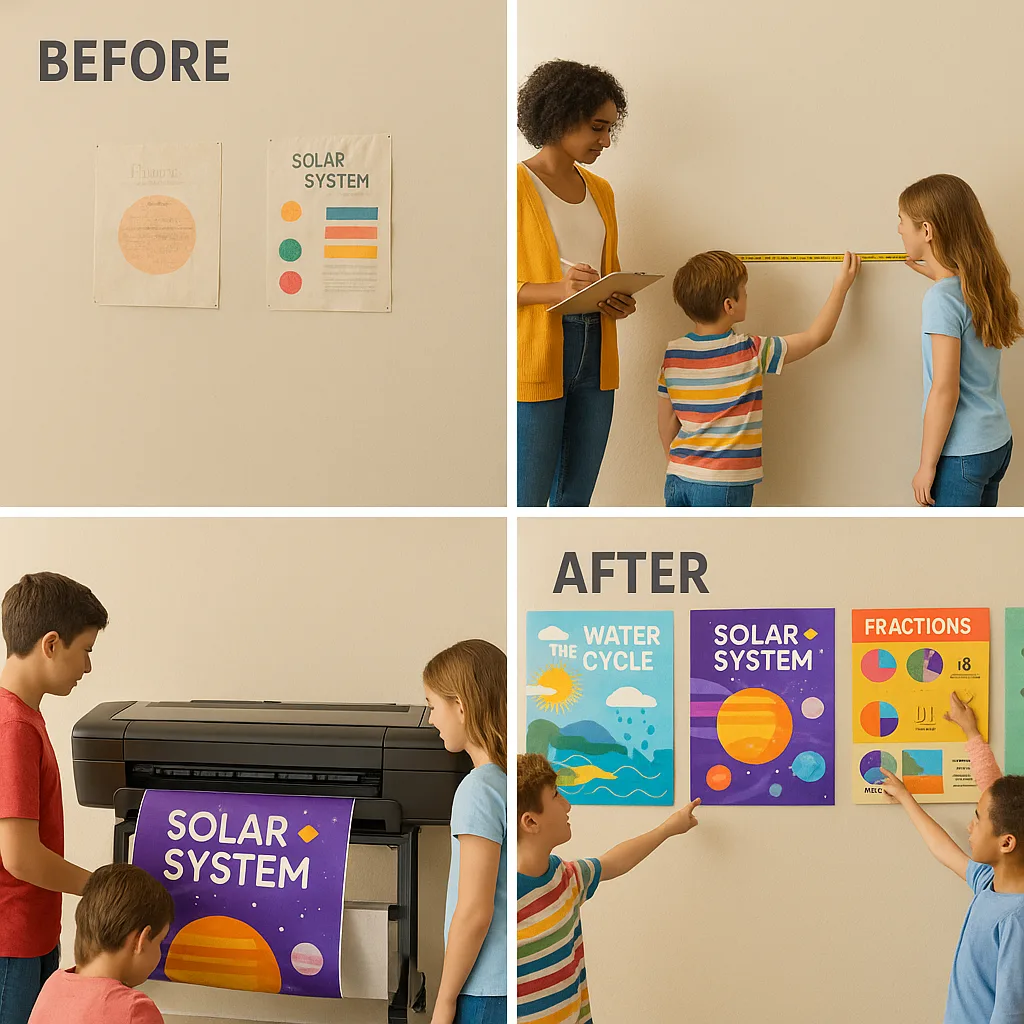
Essential Poster Machines Grant Documentation Strategies
Successful visual documentation begins long before grant deadlines approach. Schools equipped with Education Express 36 Poster Printers should establish systematic photography protocols from day one. Document every poster creation session, student interaction, and community showcase event. These seemingly routine moments transform into compelling evidence when grant opportunities arise.
Building Your Visual Portfolio: The Four-Phase Approach
Phase 1: Baseline Documentation
Capture your learning environments before implementing poster-based interventions. Photograph empty bulletin boards, bare hallways, and traditional classroom setups. Subsequently, these images provide dramatic contrast for your transformation narrative. Include wide shots showing overall space and close-ups highlighting specific challenge areas.
Phase 2: Implementation Progress
Document teachers and students actively using color poster printer machines to create learning materials. Action shots demonstrating collaboration, design processes, and printing moments resonate strongly with reviewers. Additionally, capture diverse participants—ELL students creating bilingual vocabulary walls, special education teams designing visual schedules, or STEM clubs producing experiment procedure posters.
Phase 3: Integration Evidence
Show posters actively supporting instruction across subject areas. Photograph students referencing math strategy posters during problem-solving, teachers using timeline displays during history lessons, or parent volunteers examining multilingual event announcements. Therefore, reviewers see direct connections between poster resources and educational outcomes.
Phase 4: Impact Moments
Document celebration events, student presentations featuring poster displays, and community showcases. Capture genuine engagement—students explaining their poster projects to visitors, proud parents photographing achievement walls, or peer teaching sessions using visual aids. Moreover, include quantifiable elements like attendance numbers at poster-featured events.
Transform Documentation Into Funding: Real Success Stories
Oakland’s Madison Elementary secured $52,000 in literacy enhancement funding by documenting their poster-based reading intervention program. Their visual portfolio included time-lapse photography showing struggling readers creating personal vocabulary posters, then confidently presenting to classmates six weeks later. Additionally, they documented parent engagement increasing 340% after implementing multilingual poster campaigns created with their Education Studio 36″ Poster Maker Package A+.
San Diego’s Lincoln Middle School won a $68,000 STEM grant featuring poster documentation across three key areas. First, they showed students designing scientific method posters for lab stations. Next, they captured peer teaching moments using student-created math concept walls. Finally, they documented their schoolwide science fair where every project included professional poster presentations. Consequently, reviewers could visualize immediate program implementation potential.
Technical Excellence: Photography Best Practices for Grant Documentation
Professional-quality documentation doesn’t require expensive equipment—strategic technique matters more. Natural lighting produces the most authentic results when photographing poster displays. Position yourself at slight angles to minimize glare on laminated surfaces while maintaining readability. Moreover, include human elements for scale and engagement whenever possible.
Composition guidelines for maximum grant impact include the rule of thirds for dynamic layouts and leading lines drawing attention to key poster elements. Furthermore, vary your perspectives—combine wide environmental shots with detailed close-ups of student work. Each image should tell a complete story even without captions, though detailed descriptions strengthen grant narratives.
Storage and organization prove crucial for timely grant responses. Create digital folders organized by date, project type, and participant demographics. Additionally, maintain spreadsheets linking images to specific learning objectives, state standards addressed, and measurable outcomes. This systematic approach enables rapid assembly of targeted visual evidence for any grant opportunity.
Strategic Image Selection for Maximum Impact
Grant reviewers respond to authentic moments over staged productions. Select images showing genuine student engagement, collaborative creation processes, and organic learning moments. Subsequently, avoid perfectly posed group shots in favor of candid documentation capturing the energy of discovery and achievement.
Diversity representation strengthens every application. Ensure your visual portfolio showcases various learning styles, cultural backgrounds, and ability levels benefiting from poster-based instruction. Therefore, reviewers see universal application potential rather than limited program scope.
Creating Compelling Before-and-After Narratives
Transformation stories drive grant approval decisions. Document identical classroom angles before implementing poster-based learning systems and after full integration. Subsequently, these visual pairs demonstrate tangible environmental improvements that support educational goals. Include timestamps and consistent lighting to enhance credibility.
Effective before-and-after sequences extend beyond physical spaces. Capture student work progression—from initial hand-drawn concepts to professional posters created with poster machines. Document confidence growth through presentation photos showing the same students first viewing others’ posters, then creating their own, and finally teaching peers using their visual aids.
Quantifiable elements strengthen visual narratives significantly. Include visible metrics within photos—attendance charts showing increases after poster campaign launches, student work displays with improvement percentages, or community event photos with participant counts. Therefore, reviewers see both qualitative transformation and measurable impact within single images.
Building Multi-Year Documentation Strategies
Sustainable grant success requires long-term visual documentation planning. Establish annual photography calendars aligned with key learning milestones and grant cycles. Moreover, assign documentation responsibilities across departments ensuring comprehensive coverage without overwhelming individual staff members.
Year-over-year comparisons provide powerful evidence for renewal grants. Track specific learning spaces, student cohorts, and program elements across multiple semesters. Additionally, maintain consistent photography standards enabling clear visual progression narratives. Schools using color poster printer machines generate natural documentation opportunities through regular production cycles.
Converting Visual Assets Into Grant-Winning Narratives
Transform your poster documentation portfolio into compelling grant narratives through strategic story architecture. Begin proposals with attention-grabbing visual hooks—perhaps a split image showing empty walls beside vibrant student-created learning displays. Subsequently, weave images throughout your narrative to break up text while reinforcing key points.
Caption excellence elevates visual impact exponentially. Rather than generic descriptions, craft captions highlighting specific educational outcomes, student demographics served, and alignment with grant priorities. For instance: “Third-grade ELL students increased vocabulary retention 67% after creating bilingual science posters, reaching grade-level benchmarks three months ahead of schedule.”
Integration strategies vary by grant type and funder preferences. Federal grants often require image appendices with detailed documentation protocols. Foundation grants may prefer integrated visuals within narrative sections. Furthermore, online submission portals have specific file size and format requirements—prepare multiple versions of key images to meet various technical specifications.
Measuring and Documenting ROI
Grant funders increasingly demand clear return-on-investment evidence. Document cost savings achieved through in-house poster production versus outsourcing. Additionally, photograph usage frequency—time-lapse images of high-traffic poster displays demonstrate resource efficiency.
Create visual cost comparison charts showing traditional material expenses versus poster printing costs. Include photos of storage areas showing space savings from on-demand printing versus pre-printed material storage. Therefore, reviewers understand both immediate and long-term financial benefits.
Leveraging Technology Integration
Modern grant applications favor technology-enhanced learning environments. Document students using design software, teachers dragging and dropping from Canva, and wireless printing demonstrations. Moreover, capture QR code integration on posters linking to digital resources.
Showcase your lifetime design service utilization through screenshots of professional collaboration. Include photos of teachers receiving design support and students viewing professionally-enhanced versions of their concepts. Subsequently, reviewers see comprehensive support systems beyond hardware acquisition.
Action Steps: Your 90-Day Documentation Launch Plan
Success requires immediate action and sustained commitment. Begin your poster machines grant documentation journey with these concrete steps:
Days 1-30: Foundation Building
Audit current learning environments and identify documentation opportunities. Assign photography responsibilities and establish file management systems. Furthermore, create baseline documentation of existing conditions. Train designated staff on composition techniques and equipment usage.
Days 31-60: Active Documentation Phase
Implement weekly photography schedules covering all poster-related activities. Capture diverse subjects, grade levels, and learning applications. Additionally, begin organizing images into themed portfolios aligned with common grant categories. Start building before-and-after sequences for high-impact areas.
Days 61-90: Portfolio Refinement
Review accumulated documentation and identify gaps. Create caption templates emphasizing educational outcomes and student impact. Moreover, develop sample grant narrative sections incorporating visual evidence. Practice rapid portfolio assembly for unexpected grant opportunities.
Transform your grant applications from hopeful submissions into funded realities. Strategic poster documentation provides the visual evidence funders crave while showcasing authentic student impact. Therefore, every poster your school creates becomes potential grant-winning documentation when captured effectively. Start building your visual arsenal today—your next $50,000 success story begins with the first photograph.
